The SEO Success of LinkedIn Collaborative Articles

Scarlett Pirie

LinkedIn launched their Collaborative Articles (CAs) in March 2023, a type of content powered by AI paired together with human expertise. This new content experiment by LinkedIn was marketed to users as a way for professional experts to showcase their expertise and knowledge.
Since launching this, LinkedIn has seen an increase of 112% overall as of March 2024, and a rise of 270% for the Collaborative Articles project since September 2023. Today, these pages are receiving nearly 1 million organic visits per day.
Above: LinkedIn overall traffic increases in the last 2 years (Source: Ahrefs)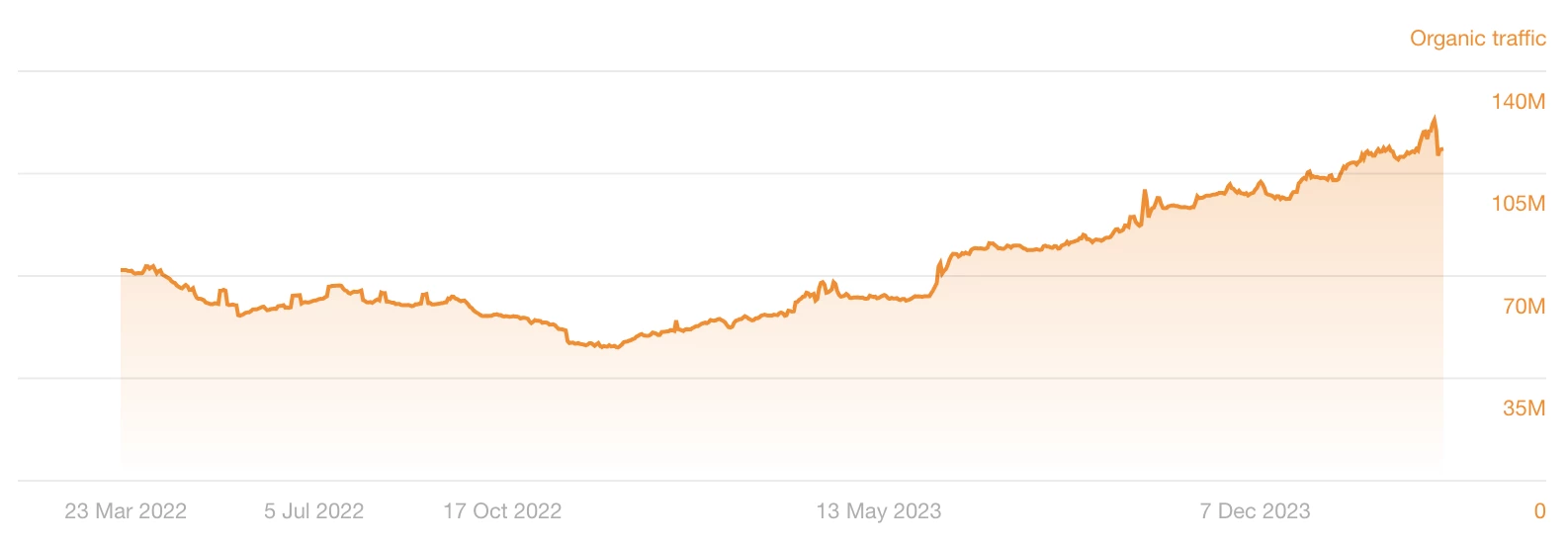
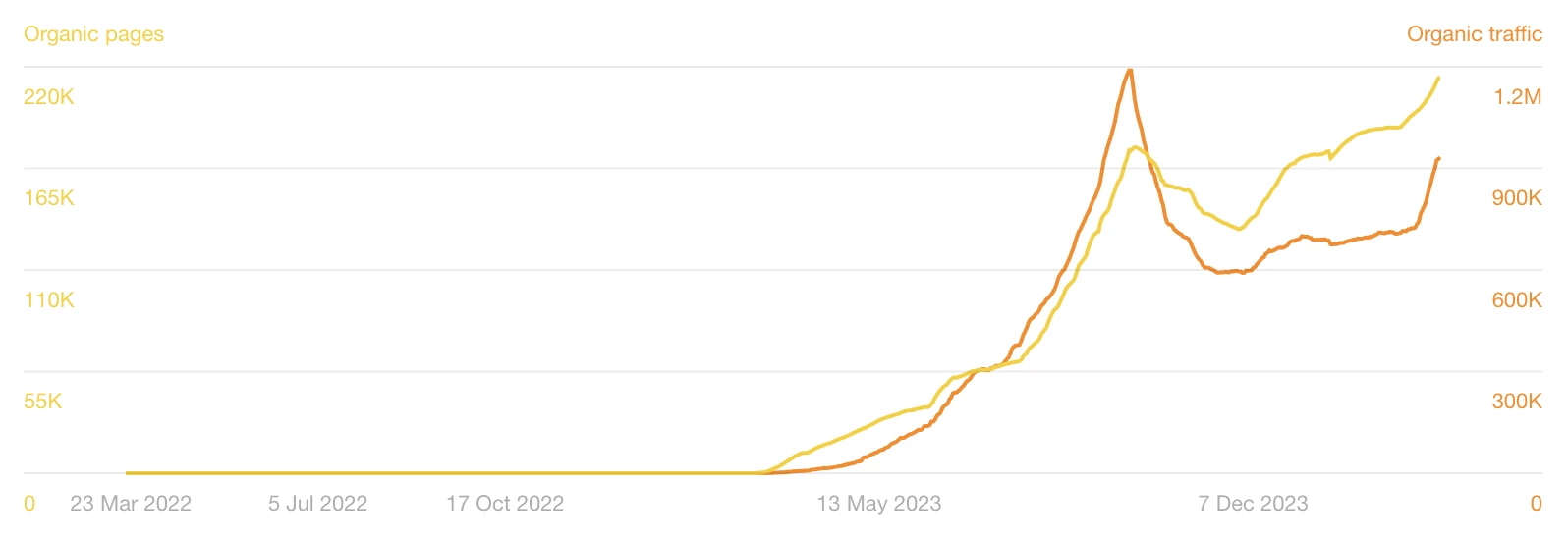
How AI plays a part
To create these pages, the initial phase uses AI to generate initial responses to FAQs or prompts and members of LinkedIn who are subject matter experts enrich the content with their own unique perspectives in their specialist area.
This allows LinkedIn to scale AI content efforts without seeing a loss in quality.
How LinkedIn users play a part
LinkedIn users receive an invitation to participate in CAs via a notification or message on their home screen asking if they would like to contribute to an article in their vertical. They can also proactively engage with existing ones and leave contributions there.

In exchange for sharing their insight, LinkedIn will award them a Community Top Voice badge, which will be displayed on their profile. This gives them credibility as an expert and thought leader, helping build their professional portfolio on LinkedIn.
Not only this, but users benefit in the sense that they can gain exposure in search on LinkedIn that they might not be able to on their own website, given that the LinkedIn domain is highly authoritative.
The result looks something like this:
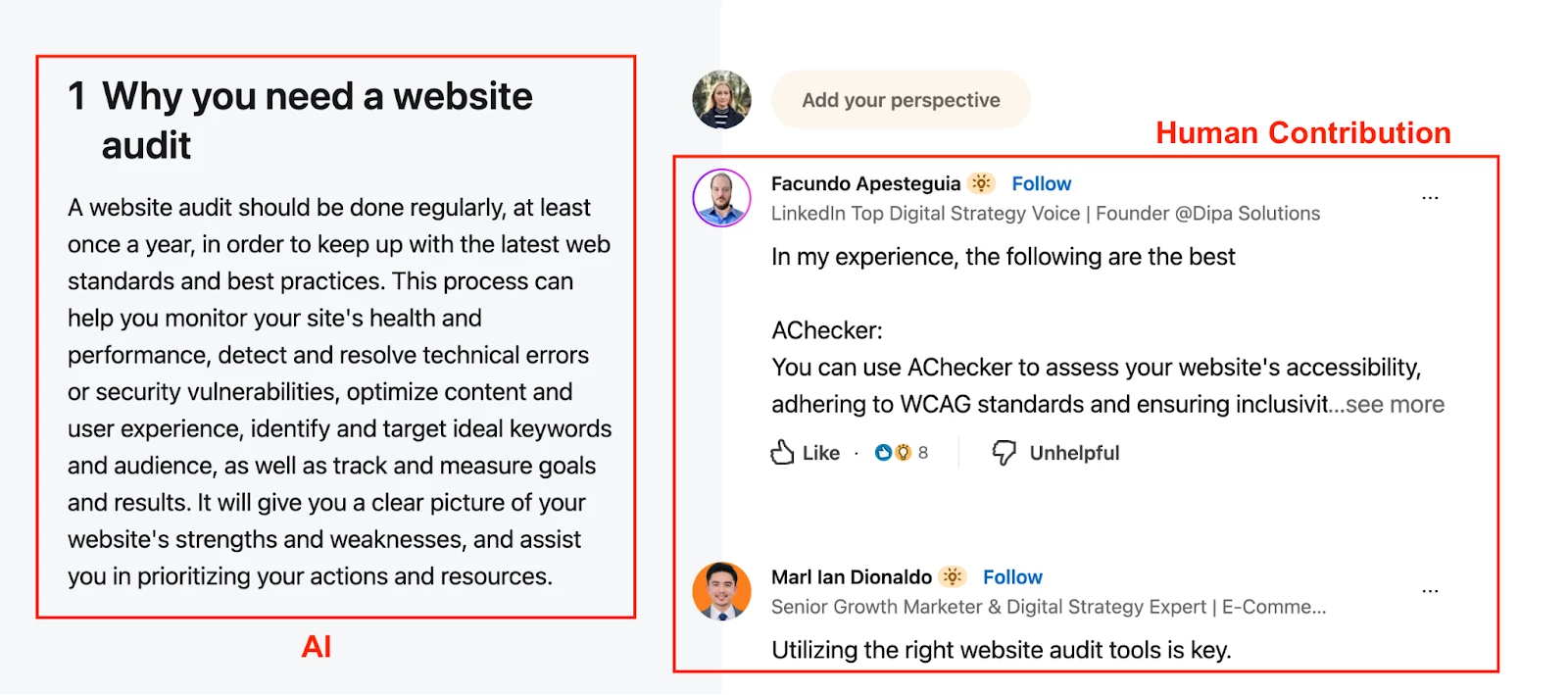
Why Collaborative Articles are so effective for SEO
One of the many ways that these content types are so effective is that it is very easy to verify that the content has been written or contributed to by verifiable subject matter experts with unique perspectives. In an age where misinformation is easily spread across the web, it can sometimes be hard to know that the content you are reading is reliable information written by topic experts.
The way that LinkedIn leverages experts within its own network to create articles is not only exceptionally effective for SEO, but also for users and for contributors, who all benefit from writing or consuming this type of content. This ticks a lot of boxes as far as Google is concerned, who are making continued efforts towards showing more helpful and trustworthy content on the web.
Google’s Helpful Content algorithm
Collaborative Articles are incredibly effective when it comes to Google’s Helpful Content algorithm, an update aimed at ensuring that more helpful, people-first content appears in search and less content created primarily for search engine traffic.
Collaborative Articles offer a unique value proposition in the sense that they offer article-style content powered by AI and human contributions within each paragraph to add perspectives and further expertise to the article. This type of content can be incredibly helpful to an end user landing on these articles, as they are presented with a helpful answer to their question and a way to verify the information being presented to them is accurate and reliable.
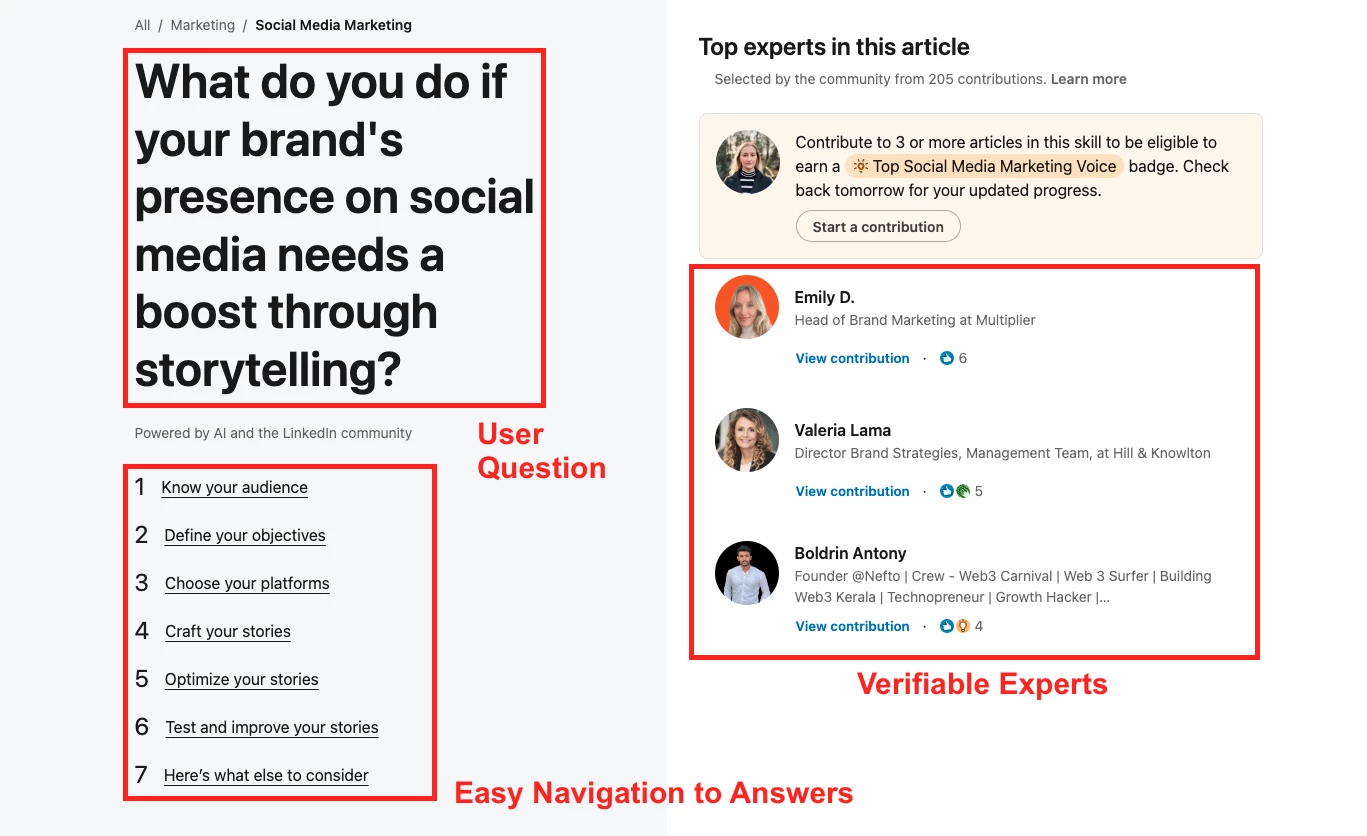
The intent of these articles is also in line with Google’s recommendation to ensure content is created for users first, not search engines. LinkedIn’s vision is to make LinkedIn the go-to destination for all work-related questions. By consolidating the knowledge and perspectives of their 1 billion members into easily-accessible, digestible, helpful content, this makes these pages incredibly valuable to people and to search engines.
Within the articles, there is a button that readers can use to offer feedback to LinkedIn if a particular article is not helpful, which further assists in establishing which content users are and aren’t finding helpful.
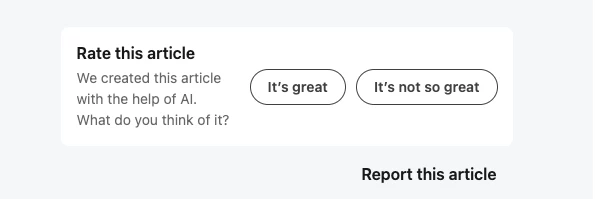
More recently, LinkedIn has improved its topic matching algorithm further with a new method called EBR. This means they have further refined the way they match users to topics they are invited to contribute to. This was in response to feedback on the quality of topics and the members they were matched to.
"One of the new methods we use is embedding-based retrieval (EBR). This method generates embeddings for both members and articles in the same semantic space and uses an approximate nearest neighbor search in that space to generate the best article matches for contributors." - LinkedIn Engineering Blog
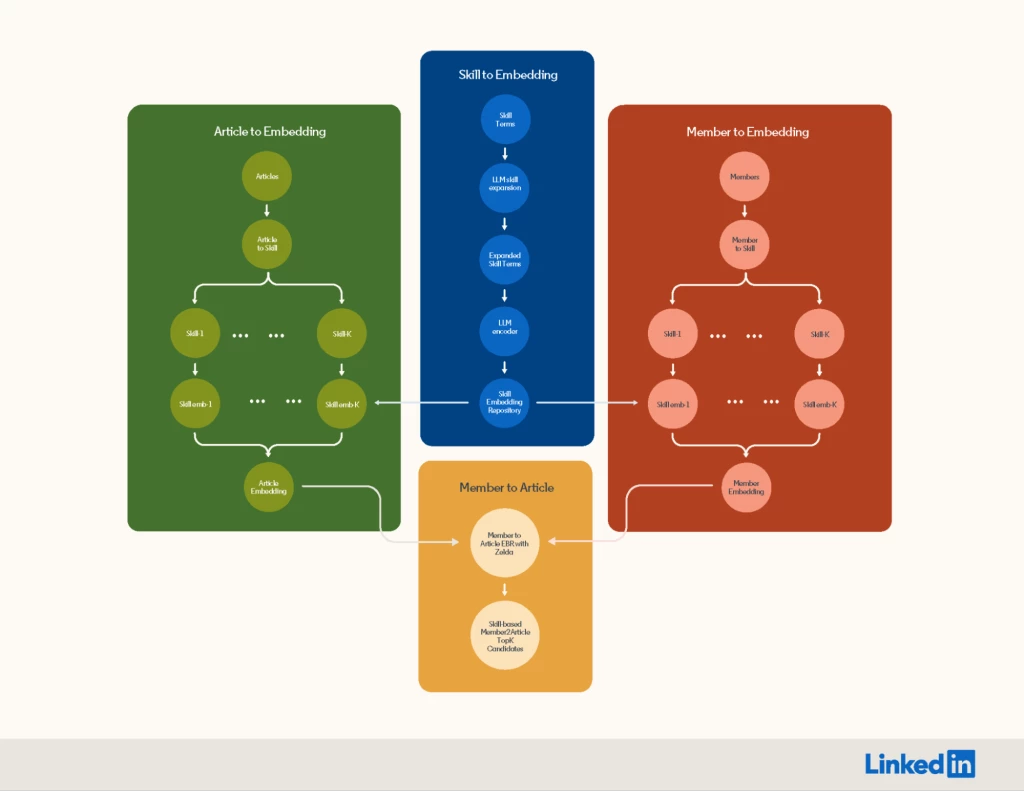
LinkedIn is constantly evolving its machine learning algorithm and listening to feedback, which in turn improves the helpfulness and quality of the content. This is an incredible SEO play.
“Hidden Gems” algorithm
Google’s “Hidden Gems” update announced in May 2023 aimed to further promote what it referred to as “hidden gems”. This update looks to identify useful content that can often be buried somewhere within forums or social media.
They stated it would be a “system that more deeply understands content created from a personal or expert point of view, allowing us to rank more of this useful information on Search”.
With LinkedIn being both a social network and website where many unique, authentic and expert perspectives are offered every day, they are even better placed to perform well following this update.
Further reading suggestion: Uncovering the Hidden Gems in Google’s Search Update
E-E-A-T
LinkedIn sets the bar high when it comes to achieving a high Page Quality Rating as this content is simply bursting with E-E-A-T. As the project has resulted in millions of pages of high quality, helpful content contributed to by topic experts, hitting the mark for Experience, Expertise, Authority and Trust at scale with minimal investment seems almost effortless.
Experience
In Google’s guidelines, they state:
“There are some situations where really what you value most is content produced by someone who has first-hand, life experience on the topic at hand.”
Given LinkedIn’s advanced topic matching algorithm and the way users are encouraged to share their thoughts and experience on that specific topic, CAs hit the mark for experience with real precision, and this is only getting better as their algorithm evolves.
Expertise & Authority
Right away, when you land on a collaborative article, you are informed who the Top 3 contributors are to Collaborative Articles as well as how many contributions there are on the article.
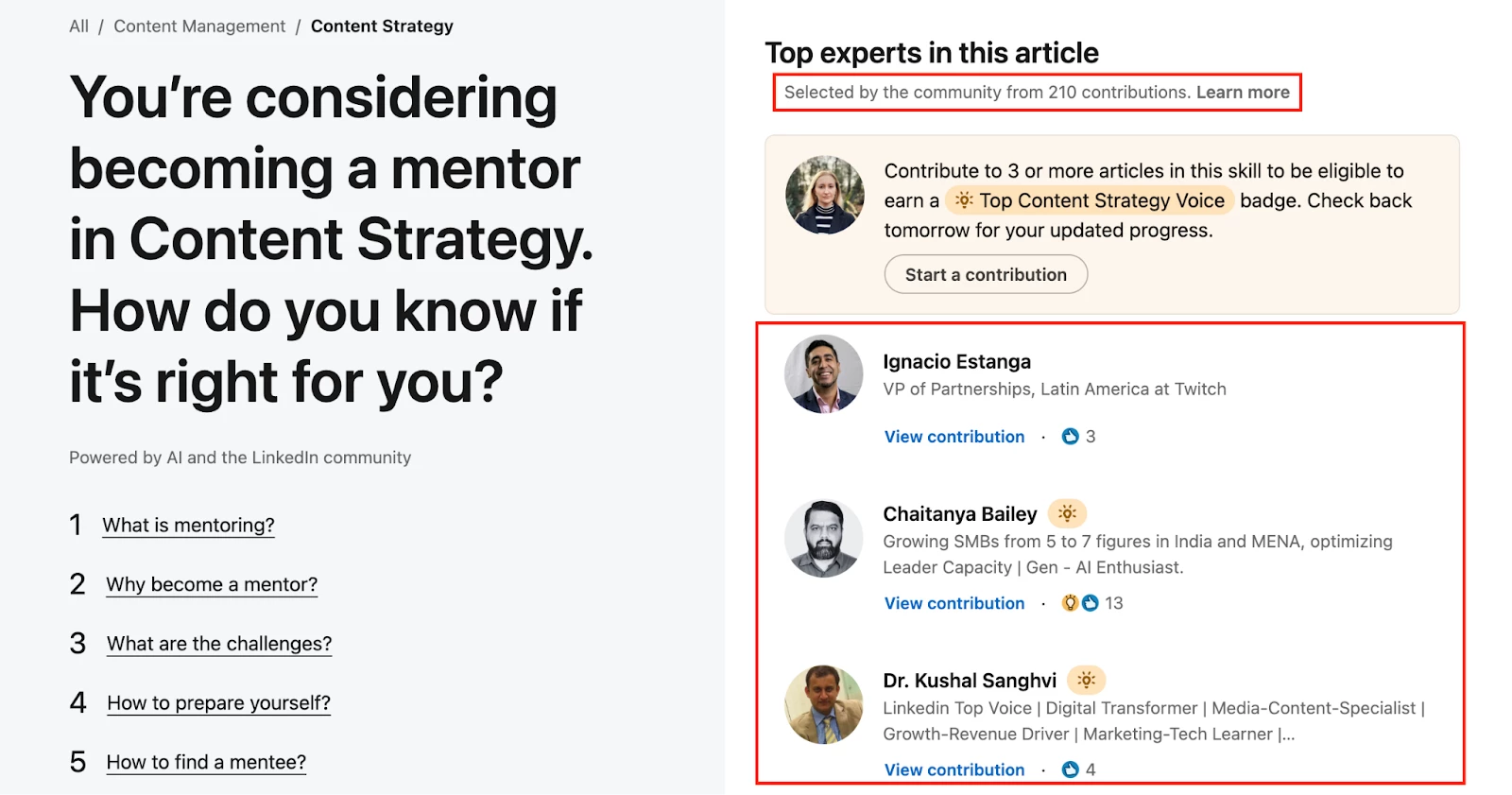
The “Top Experts” show the top 3 contributors to the piece, and are only displayed when other members have reacted to their contributions.
LinkedIn does an excellent job at clearly showing that the article has been contributed to by expert individuals who can be easily identified and who are authoritative on the subject matter. This is backed up by member reactions to their contributions and links through to their profiles where their expertise can be verified easily.
Trust
By showcasing the number of contributions to an article, linking the verifiable contributors backed up with reactions from other members, Collaborative Articles are effective in instilling user trust.
LinkedIn & the future of search
If the last few years of Google updates and the March 2024 core update are anything to go by, it's clear that Google is making strong, continued steps towards a search landscape that offers more helpful, trustworthy and unique content. LinkedIn is very well placed to satisfy this across a number of different areas including:
Following Google’s guidelines
Adding value for their audience
Adding unique perspectives from contributors
However, it's also worth noting that continued effort should be made by LinkedIn to ensure quality remains high. Allowing all users to contribute to content risks the spreading of misinformation or contributions lacking experience, which at scale could have a negative impact.
For many professionals and business owners, having a holistic view of your online presence, that isn’t just focused on your own website alone, is of ever growing importance is the search landscape. Understanding how and why websites like LinkedIn are developing a stronger presence in search can help you leverage channels such as these for your own marketing strategy. Therefore, futureproofing your own marketing efforts.
